 In his homily at the ordination of Bishop Udo Bentz as auxiliary bishop of Mainz, last Sunday, Cardinal Karl Lehmann drew heavily on St. Augustine, and especially on his thoughts on the office of bishop, and the dangers of it. The cardinal wants to emphasise the fact that a bishop always remains a part of the faithful, with whom he shares a common Christianity.
In his homily at the ordination of Bishop Udo Bentz as auxiliary bishop of Mainz, last Sunday, Cardinal Karl Lehmann drew heavily on St. Augustine, and especially on his thoughts on the office of bishop, and the dangers of it. The cardinal wants to emphasise the fact that a bishop always remains a part of the faithful, with whom he shares a common Christianity.
There is also a personal element in the homily, towards the end, as Cardinal Lehmann reflects on his many years as bishop of Mainz and the people he shared that time with. It is hard not to read this in the light of his upcoming retirement. Aged 79, it is a safe bet that Cardinal Lehmann will retire between now and his 80th birthday, on 16 May next year. He has been the bishop of Mainz since 1983, and as such he is the longest-serving German bishop, and one who is still the ordinary of the diocese he was ordained for.
Here is the cardinal’s homily in my translation:
 “Honourable sisters and brothers in the Lord!
“Honourable sisters and brothers in the Lord!
Dear brother Dr. Udo M. Bentz, about to be ordained as bishop!
Dear co-consecrators Karl-Josef Cardinal Rauber and Archbishop Stephan Burger!
Dear brothers in the office of deacon, priest and bishop!
What is a bishop? Why and how do we have such an office in the Church? An initial answer can already be found in the word for this service. “Episcopus“, from which the word bishop comes, is one who “oversees”, and a “guardian”, a “supervisor”. From the Bible, the word also derives from “shepherd”. Incidentally, the liturgy of ordination, the act of ordination, with its ancient signs and gestures, words and hymns, so eloquent and filled with meaning, that any preaching can be but a small introduction to these events. I will mention but one especially impressive image: during the entire prayer of ordination two priests hold the Gospel book above the head of the ordained. The bishop should be completely under the Gospel and serve Him.
Today I choose another path and will discuss some words from Saint Augustine. As is well known, as bishop of Hippo on northern Africa, he would always speak about the office of bishop on the day of his ordination. He would certainly also have done so at bishops’ ordinations in the African Church province. Sita, the titular see of Udo Bentz, in north Africa, belonged to it. One can already learn much from these homilies. I want to try and do so with you.
For that purpose I have chosen a text from the homilies, which is incidentally also quoted in the great text about the Church from the Second Vatican Council (LG 32): “What I am for you terrifies me; what I am with you consoles me. For you I am a bishop; but with you I am a Christian. The former is a duty; the latter a grace. The former is a danger; the latter, salvation” (Serm. 340, 1: PL 38, 1483).
During the Second Vatican Council this text was cited as an important point in relation to the statements concerning the laity. That may surprise, since there is a separate chapter on bishops. Here in relation to the laity, they and the holders of offices become in a very fundamental way like brothers, yes, like a family of God, through which the new commandment of love in realised. At many points, especially in the second chapter of the Constitution on the Church, the Second Vatican Council strongly emphasised this fundamental commonality. That is why it is a very fundamental decision of the Council to concentrate the understanding of the People of God on the commonality of all believers, and not in advance on any distinction between the various charisms, services and offices. A “true equality” can then be established in building up the Body of Christ and in the call to holiness. As LG 32 puts it: “And if by the will of Christ some are made teachers, pastors and dispensers of mysteries on behalf of others, yet all share a true equality with regard to the dignity and to the activity common to all the faithful for the building up of the Body of Christ. For the distinction which the Lord made between sacred ministers and the rest of the People of God bears within it a certain union, since pastors and the other faithful are bound to each other by a mutual need. Pastors of the Church, following the example of the Lord, should minister to one another and to the other faithful. These in their turn should enthusiastically lend their joint assistance to their pastors and teacher” (Constitution on the Church “Lumen gentium”, Chapter 4, par. 32). It is understandable that these words from Saint Augustine have often been repeated very often in recent years and decades, together with the remarks from the Constitution on the Church about the laity.
Certainly, one should not take this text as noncommittal expression of a mere personal modesty. This is about a true theology of office and at the same time about the unity of Christianity in the variety of tasks.
“For you I am a bishop…” Augustine does not see the office as contained in itself, in its value and power. Her understands it entirely in relation to the task entrusted to him. The office of bishop is entirely a service to the sisters and brothers in the faith. Augustine also says this in another way, that the guidance and leadership are only fulfilled in the fruitfulness and “usefulness” of his service to the people.
As we know, Augustine considered the task of being bishop a burden on his shoulder and which often also depressed him. From that comes the anxiety and doubt if he really did justice to his task, especially in the eyes of others, and fulfilled it adequately before God. This is in sharp contrast to many homilies at a first Mass or anniversary of a bishop, even in our time. For Augustine wonder if this high office, which certainly demands much of him, is not a great danger to himself. We often think differently and often believe that a high official is already closer to God because of his position, and has so many merits that God will automatically save him and give him eternal life. For Augustine, the office is no relief, but a danger to his salvation, as becomes very clear in the sermon quoted at the beginning. In the Middle Ages they thought similarly. One need only think of Dante.
What comforts the bishop of Hippo in the face of this danger, is the shared Christianity with all sisters and brothers. Here the bishop is part of “normal” Christian life. There each is first responsible for himself when this can also be freely extended to others. So Augustine can say, in short, “Learning is dangerous, but students are safe”. He who stands “above” others, must be judged and addressed according to the measure of his task. The terror of this diminishes when one completely becomes a part of the flock of believers. This unity is even more important than the office alone.
Many burdens of office become light when one is quite humble in relations with the normal and simple People of God. I personally often like to speak in this regard of belonging to the “foot soldiers” of God. It then also becomes visible what has been given and asked of others and does not overestimate oneself. This unity in Christianity with many other makes more modest and humble. It is in any case contrary to all overconfidence of office.
Nevertheless, Augustine is very much aware about the own responsibility of the office, which he does not underestimate. He also does not deny it. He talks about the office as a duty (officium). He agrees with Pope Gregory the Great that the bishop is the “watcher”, the one who looks ahead and so has to lead the way. He must be ready for conflicts if the Gospel demands it. Like Jesus he must also be willing to give his own life. This can result in a profound loneliness. That is why the unity with all the faithful is, once again, so important.
That one statement by St. Augustine, “What I am for you…”, which reflects, with many similar insights in his work, a deep grounding in the Triune God, says more about the office of bishop and its execution than many great treatises about the theology of office. I am in any case grateful to St. Augustine for these words. For me they remain valuable and helpful.
As bishop, I have been able to experience this mutual support, this shared Christianity and life in various duties here in Mainz for a long and rich time. I thank the many women and men, young and old for the solidary way with which they supported our service. Time and again, I was able to gratefully feel this foundation, together with my predecessors Bishop Stohr and Cardinal Volk, and the auxiliary bishops Joseph Maria Reus, Wolfgang Rolly, Franziskus Eisenbach, Werner Guballa and Ulrich Neymeyr. This applies to both voluntary and paid staff. Because of it I was able to always do my duty with joy and gratitude. A prerequisite is certainly that one listens to others and remains in dialogue with them and that one acknowledges what others say until the end, as Saint Benedict teaches us in his rule, and that one is also willing to accept corrections. Only in this way unity is possible without blurring the differences in responsibilities.
With this gratitude I also ask that we maintain this valuable heritage of a good tradition in the Church, for which Saint Augustine stands and which once again comes to life in the Second Vatican Council, through our working together, not only today, but also tomorrow, as an indispensible element in the construction of the Church of Mainz. I also wish this spiritual and pastoral heritage for you, dear Udo M. Bentz, in the name of all present on your ordination day and for your service. Carry the torch of faith onwards. The fire still burns under the ashes. Amen.
Karl Cardinal Lehmann, Bishop of Mainz”

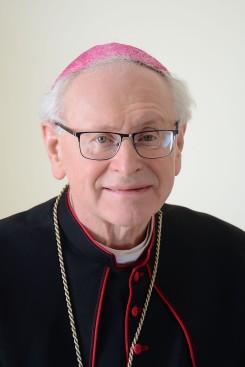 Following a period of ill health, Finland’s first native-born bishop of the modern era retired early today.. Marking his 72nd birthday, Bishop Teemu Sippo announced the news in a letter to the faithful. Bishop Sippo headed the Diocese of Helsinki, which covers all of Finland, since 2009. He cites his ailing health, worsened by a fall at Christmas time, as the reason for his retirement
Following a period of ill health, Finland’s first native-born bishop of the modern era retired early today.. Marking his 72nd birthday, Bishop Teemu Sippo announced the news in a letter to the faithful. Bishop Sippo headed the Diocese of Helsinki, which covers all of Finland, since 2009. He cites his ailing health, worsened by a fall at Christmas time, as the reason for his retirement

 Although not unexpected following the prayer request for his health, issued last week by Bishop Peter Kohlgraf, the death of Cardinal Karl Lehmann, early yesterday morning, is a sad conclusion to a long lifetime of service to the Church, one that coincided with and shaped the past decades of her life and development.
Although not unexpected following the prayer request for his health, issued last week by Bishop Peter Kohlgraf, the death of Cardinal Karl Lehmann, early yesterday morning, is a sad conclusion to a long lifetime of service to the Church, one that coincided with and shaped the past decades of her life and development.

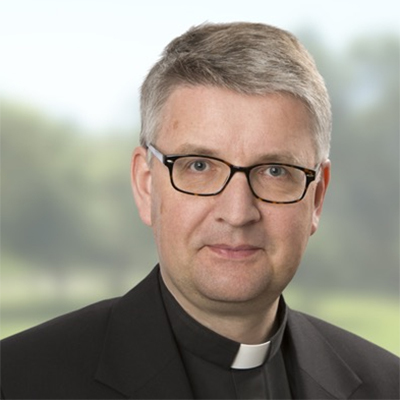 Almost a year after the retirement of Cardinal Karl Lehmann, all the dioceses of Germany have a bishop at the helm again – a situation that has not existed for several years. Succeeding the cardinal who led the Diocese of Mainz for 33 years is Father Peter Kohlgraf.
Almost a year after the retirement of Cardinal Karl Lehmann, all the dioceses of Germany have a bishop at the helm again – a situation that has not existed for several years. Succeeding the cardinal who led the Diocese of Mainz for 33 years is Father Peter Kohlgraf.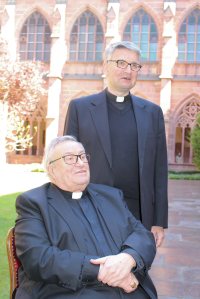
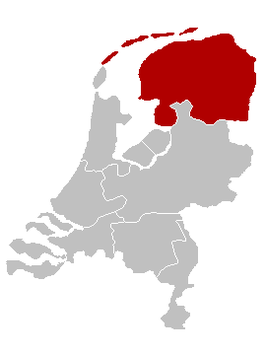 There have been years when the changes were rather significant, but 2017 does not look to be one of those. At the start of the new year, three dioceses are without a bishop: Groningen-Leeuwarden in the Netherlands (map at right), Mainz in Germany and the Territorial Prelature of Trondheim in Norway. It is a safe bet that the first two will receive their new bishops in 2017, but Trondheim may well be left as it has been for the past seven years: without a bishop, and with the bishop of Oslo serving as Apostolic Administrator. But on the other hand, for a see that just built and consecrated its new cathedral, and which, like the rest of Norway, has seen a significant increase in Catholic faithful, this does not seem like a situation that will continue forever. So who knows what the year will bring.
There have been years when the changes were rather significant, but 2017 does not look to be one of those. At the start of the new year, three dioceses are without a bishop: Groningen-Leeuwarden in the Netherlands (map at right), Mainz in Germany and the Territorial Prelature of Trondheim in Norway. It is a safe bet that the first two will receive their new bishops in 2017, but Trondheim may well be left as it has been for the past seven years: without a bishop, and with the bishop of Oslo serving as Apostolic Administrator. But on the other hand, for a see that just built and consecrated its new cathedral, and which, like the rest of Norway, has seen a significant increase in Catholic faithful, this does not seem like a situation that will continue forever. So who knows what the year will bring. There are a few bishops who will reach the age of 75 in 2017, and thus will offer their resignation. In Germany, these are Bishop Friedhelm Hofmann of Würzburg on 12 May and Norbert Trelle (at left) of Hildesheim on 5 September. Joining them is Bishop Frans Wiertz of Roermond in the Netherlands. He will be 75 on 2 December, but I would not be surprised if his retirement will be accepted earlier, as the bishop has been struggling with eye-related health problems.
There are a few bishops who will reach the age of 75 in 2017, and thus will offer their resignation. In Germany, these are Bishop Friedhelm Hofmann of Würzburg on 12 May and Norbert Trelle (at left) of Hildesheim on 5 September. Joining them is Bishop Frans Wiertz of Roermond in the Netherlands. He will be 75 on 2 December, but I would not be surprised if his retirement will be accepted earlier, as the bishop has been struggling with eye-related health problems.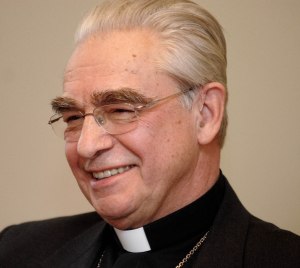 In Rome, lastly, there will be no new consistory. Only four cardinals will reach the age of 80 and so cease to be electors. They are Audrys Backis, Archbishop emeritus of Vilnius, Lithuania (and former Nuncio to the Netherlands) (at right); Raymundo Damasceno Assis, Archbishop emeritus of Aparecida, Brazil; Attilio Nicora, Pontifical Legate to the Basilicas in Assisi, Italy; and Lluís Martínez Sistach, Archbishop emeritus of Barcelona, Spain. The number of cardinals who will be able to participate in a conclave will still be 116 at the end of next year, so there will be no need to bring their numbers up.
In Rome, lastly, there will be no new consistory. Only four cardinals will reach the age of 80 and so cease to be electors. They are Audrys Backis, Archbishop emeritus of Vilnius, Lithuania (and former Nuncio to the Netherlands) (at right); Raymundo Damasceno Assis, Archbishop emeritus of Aparecida, Brazil; Attilio Nicora, Pontifical Legate to the Basilicas in Assisi, Italy; and Lluís Martínez Sistach, Archbishop emeritus of Barcelona, Spain. The number of cardinals who will be able to participate in a conclave will still be 116 at the end of next year, so there will be no need to bring their numbers up. In the Netherlands, to begin with, a new bishop will arrive in the Diocese of ‘s-Hertogenbosch. Bishop Antoon Hurkmans (right) has already has his resignation on health grounds accepted and it shouldn’t take more than a few more months for his successor in the country’s largest diocese (in numbers at least) to be named. Will it be current Auxiliary Bishop Rob Mutsaerts? Who’s to say.
In the Netherlands, to begin with, a new bishop will arrive in the Diocese of ‘s-Hertogenbosch. Bishop Antoon Hurkmans (right) has already has his resignation on health grounds accepted and it shouldn’t take more than a few more months for his successor in the country’s largest diocese (in numbers at least) to be named. Will it be current Auxiliary Bishop Rob Mutsaerts? Who’s to say. In Germany, three prelates are expected to retire this year. First of all the long-serving Bishop of Mainz, Cardinal Karl Lehmann (left), who will reach the age of 80 in May. Losing his voting rights in the conclave and his memberships in the Curia, his retirement is expected to follow around the same time. The Diocese has already announced that Cardinal Lehmann will continue to live in his current home, while the former abode of Cardinal Volk, bishop of Mainz from 1962 to 1982. Cardinal Lehmann has headed Mainz since 1983.
In Germany, three prelates are expected to retire this year. First of all the long-serving Bishop of Mainz, Cardinal Karl Lehmann (left), who will reach the age of 80 in May. Losing his voting rights in the conclave and his memberships in the Curia, his retirement is expected to follow around the same time. The Diocese has already announced that Cardinal Lehmann will continue to live in his current home, while the former abode of Cardinal Volk, bishop of Mainz from 1962 to 1982. Cardinal Lehmann has headed Mainz since 1983. In Limburg we may finally expect the arrival of a new bishop. Administrator Bishop Manfred Grothe (right) will be 77 in April and has already retired as auxiliary bishop of Paderborn. In March, it will be two years since Bishop Tebartz-van Elst was made to retire, and according to Bishop Grothe, the time is just about ready for his successor to be named.
In Limburg we may finally expect the arrival of a new bishop. Administrator Bishop Manfred Grothe (right) will be 77 in April and has already retired as auxiliary bishop of Paderborn. In March, it will be two years since Bishop Tebartz-van Elst was made to retire, and according to Bishop Grothe, the time is just about ready for his successor to be named. In the Archdiocese of Hamburg, the last auxiliary bishop, Hans-Jochen Jaschke (left) will reach the age of 75 in September. This may mean that Archbishop Stefan Heße will be requesting one or more new auxiliary bishops from Rome, either this or next year.
In the Archdiocese of Hamburg, the last auxiliary bishop, Hans-Jochen Jaschke (left) will reach the age of 75 in September. This may mean that Archbishop Stefan Heße will be requesting one or more new auxiliary bishops from Rome, either this or next year. In Belgium then, Ghent’s Bishop Luc Van Looy (right) will turn 75 in September. The Salesian, who became president of Caritas Europe and was among Pope Francis’ personal choices to attend the Synod of Bishops last year, has been bishop of Ghent since 2003.
In Belgium then, Ghent’s Bishop Luc Van Looy (right) will turn 75 in September. The Salesian, who became president of Caritas Europe and was among Pope Francis’ personal choices to attend the Synod of Bishops last year, has been bishop of Ghent since 2003. In Rome, another Belgian bishop will reach the retirement age in April, Archbishop Frans Daneels (left), secretary of the Apostolic Signatura and a Norbertine priest, may return to Averbode Abbey in Belgium, where he made his profession in 1961.
In Rome, another Belgian bishop will reach the retirement age in April, Archbishop Frans Daneels (left), secretary of the Apostolic Signatura and a Norbertine priest, may return to Averbode Abbey in Belgium, where he made his profession in 1961.
 In an extensive biography (cover pictured), published earlier this week, Cardinal Godfried Danneels, retired archbishop of Mechelen-Brussels and personal choice of Pope Francis to attend the Synod of Bishops assembly in two weeks time, speaks frankly about his membership of a group of cardinals and bishops, which he likenes to a maffia. This group, named Sankt Gallen for the Swiss town where they would meet, became active in 1990s and included among its members the late Cardinals Carlo Martini and Basil Hume, Cardinals Kasper and Lehmann, as well as Bishop Ad van Luyn, bishop emeritus of Rotterdam.
In an extensive biography (cover pictured), published earlier this week, Cardinal Godfried Danneels, retired archbishop of Mechelen-Brussels and personal choice of Pope Francis to attend the Synod of Bishops assembly in two weeks time, speaks frankly about his membership of a group of cardinals and bishops, which he likenes to a maffia. This group, named Sankt Gallen for the Swiss town where they would meet, became active in 1990s and included among its members the late Cardinals Carlo Martini and Basil Hume, Cardinals Kasper and Lehmann, as well as Bishop Ad van Luyn, bishop emeritus of Rotterdam. In his
In his  “Honourable sisters and brothers in the Lord!
“Honourable sisters and brothers in the Lord!
 On 20 September he will fill the vacancy left by Bishop Ulrich Neymeyr as auxiliary bishop of Mainz, but for Msgr. Udo Bentz there is more linking him to the past and the bishops who came before him. Consider something as simple as the various signs of his new office: the episcopal cross that he will wear on his chest is gift from his family, the staff is given by the diocese, the mitre comes from Cardinal Karl-Josef Rauber (who will also be one of the co-consecrators), and the bishop’s ring has perhaps the most personal value. It used to belong to Bishop Werner Guballa, who
On 20 September he will fill the vacancy left by Bishop Ulrich Neymeyr as auxiliary bishop of Mainz, but for Msgr. Udo Bentz there is more linking him to the past and the bishops who came before him. Consider something as simple as the various signs of his new office: the episcopal cross that he will wear on his chest is gift from his family, the staff is given by the diocese, the mitre comes from Cardinal Karl-Josef Rauber (who will also be one of the co-consecrators), and the bishop’s ring has perhaps the most personal value. It used to belong to Bishop Werner Guballa, who